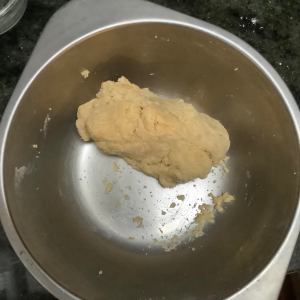People who are new to Fasting often pose the questions: “Can I really eat ‘anything I want’ on a Slow Day?” and “What should I eat on Slow Days?” To answer those questions, I have decided to add some blog posts to show some of the foods we eat on what the world calls NFDs [non-fast days] but which, in our house, we call ‘Slow Days.’ This feature will appear sporadically.
Now for the answers. Can you really eat ANYTHING you want on a Slow Day? Not really. If you eat too many calories every Slow Day, you will not lose weight. There are many questions asked on the FastDiet Forum which attest to that. Once in a while you can splurge, as long as it isn’t everyday. For what to eat on Slow Days, Dr. Mosley recommends a Mediterranean Diet. As for how we eat, an example follows.
Once a week, we have a meal involving pasta. And, yes, for those of you in the US who are from New England, the day we eat pasta is Wednesday. Many years ago, we bought a pasta machine. We were quite self-sufficient in those days, so making our own noodles seemed just right. It was fun, but then I returned to work and the machine sat in the drawer. Nowadays, it is back to DIY, and with lots of our own eggs, fresh pasta is on the menu again. There are two basic recipes: all-purpose flour + eggs OR semolina flour with water. I decided to combine them: 1 cup semolina flour, 1 cup white whole wheat flour, 1 two-ounce egg [US Large], and some water. These are combined in a food processor or by hand, adding enough water to make a rough ball of slightly moist dough, like Sugar Cookie Dough.
Kneading and rolling it out is the job of the pasta machine. First the dough goes through the rollers at “1,” which is the widest setting. It is folded in half, and rolled again. Every time the dough goes through, it holds together better and becomes smoother. Then you gradually set the rollers at higher and higher numbers: 1 to 2, 2 to 4. Each time, the dough becomes thinner, longer, and more supple. Cut the lo-o-ong dough strips cross-wise so that it is easier to handle. Eventually you reach the setting 6. You could stop there or make it really thin at 7. Six is good for noodles, 7 is better for filled pasta such as ravioli or tortellini.
Now it is time to cut the dough into noodles. You could do it by hand, or by machine. Our machine has two choices: thin like spaghetti, or wider like fettuccini. Working with the smaller dough rectangles, one passes the dough through the cutters. Catch it coming out the other side and hang it up to dry. You can use it fresh, and it is delicious. Cook only 1-2 minutes and bear in mind that 2 oz dry pasta [one serving], is the equivalent of 5 oz fresh pasta. While the water is boiling and the sauce is heating, the pasta is drying slightly, which makes it easier to handle. What I don’t use for today’s meal is dried thoroughly and stored, air-tight, for use another time.
Would I make pasta every week? No, but it is great for special meals. Does pasta make a meal ‘Mediterranean’? Not automatically. How healthy a pasta dish is depends on what is on top of the pasta. Is Pasta a no-no for Fast Day meals? Yes and no. Chicken Tetrazzini, Tortellini with Black Kale, these are some of the Fast meals I’ve posted using pasta as an ingredient. Just remember that a ‘serving’ of dried pasta, of any shape, is 2 ounces. On a Slow Day, knock that down to 1 or 1-1/2 ounces and you can hedge your bet. Our pasta is made even healthier by substituting white whole wheat flour for the all-purpose flour, which adds more protein and more fiber. It is delicious and worth the effort that you put into it.



